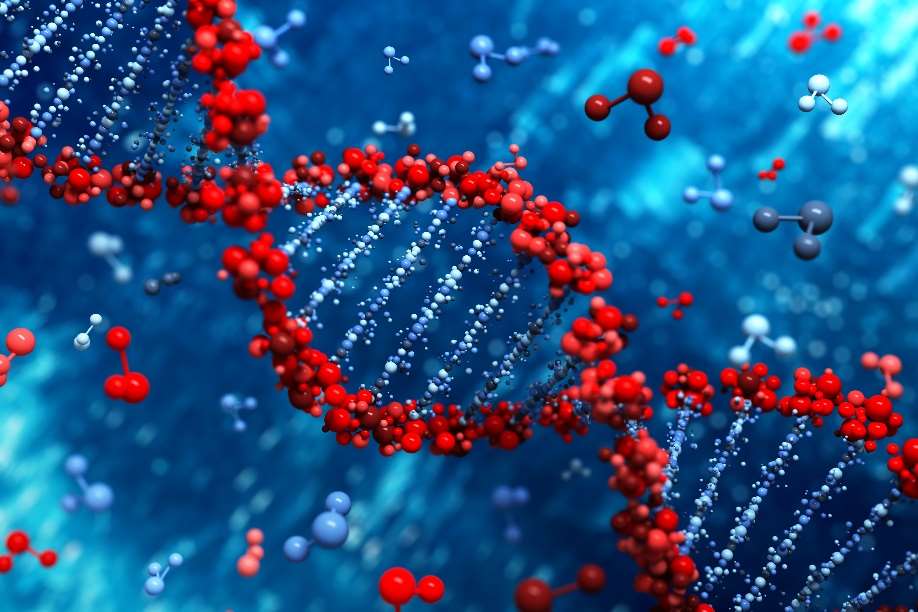In situ hybridization (ISH) is a powerful technique for localizing specific nucleic acid targets within fixed tissues and cells, allowing to obtain temporal and spatial information about gene expression and genetic loci. While the basic workflow of ISH is similar to that of blot hybridizations — the nucleic acid probe is synthesized, labeled, purified, and annealed with the specific target — a greater amount of information can be gained by visualizing the results within the tissue.

There are two basic methods to visualize your DNA and RNA targets in situ — fluorescence (FISH) and chromogenic (CISH) detection. The inherent characteristics of each method make FISH and CISH useful for very distinct applications. While both use a labeled, target-specific probe to hybridize to the sample, the instrumentation used to visualize the sample is different for each method. Here we highlight the differences and the advantages of each method.
FISH enables the rapid detection of chromosomal aberrations in all manner of tissues, including both fresh and archival specimens. This technology has gained widespread acceptance in the clinical cytogenetic and research communities. However, the same method is less frequently used in non-cytogenetic diagnostic pathology services. This is, in part, because FISH imaging equipment is not universally available to the diagnosticians responsible for histological diagnoses.
Multiplex FISH exemplifies the elegance that only fluorescence-based strategies can offer: the ability to detect multiple targets simultaneously and visualize co-localization within a single specimen. Using spectrally distinct fluorophore labels for each different hybridization probe, this approach gives you the power to resolve several genetic elements or multiple gene expression patterns in a single specimen, with multicolor visual display.
CISH allows detection of gene amplifications, gene deletions, and chromosome translocations using conventional peroxidase or alkaline phosphatase reactions under a brightfield microscope. Tissue morphology and gene aberrations can thus be viewed simultaneously, and due to its similarities to immunohistochemistry (IHC) techniques, CISH can be easily adapted for use in histology labs. This increases the amount of information available to physicians, helping them make the best therapeutic decisions in patient care.
| Instrument/visualization method | Primary advantage | Primary application | |
| FISH | Epifluorescence or confocal microscope | Visualization of multiple targets in the same sample | Gene expression and cytogenetics |
| CISH | Bright-field microscope | Ability to view the CISH signal and tissue morphology simultaneously | Molecular pathology diagnostics |
Pros and Cons of FISH and CISH
FISH is more widely used than CISH for molecular cytogenetic analysis, especially in cytogenetic laboratories. However, both methods have their distinct advantages and disadvantages.
One important advantage of FISH is that probe detection can be accomplished by direct detection. In contrast, chromogenic detection methods are indirect by definition, and CISH typically requires at least two additional steps beyond probe hybridization. For example, a probe can be labeled with FITC or rhodamine, and thereby detected directly using the FISH method. The same probe might be labeled with biotin and then detected by sequential incubations with Streptavidin-HRP and DAB, using the CISH method.
Another advantage of FISH is that penetration of probes and detection reagents, to the target chromosomal regions, is more readily than with the larger detection proteins, e.g., alkaline phosphatase, customarily used in CISH. CISH, on the other hand, has several advantages that are of particular relevance in paraffin section applications. For example, the histological detail of paraffin sections can be better appreciated with brightfield, rather than fluorescence, counterstaining and viewing. This is in part because cellular and extracellular proteins can contribute to a dull, generalized, autofluorescence, which often obscures FISH signals in paraffin sections. Another factor is that large areas of the tissue section can be quickly scanned after CISH counterstaining with conventional stains such as hematoxylin. Morphological details are readily apparent using low-power objectives, and the CISH probe signals themselves can be apparent even at such low magnification. Fluorescent probe signals, on the other hand, are generally only appreciated at relatively higher magnification. A further advantage of CISH is that the probe signals are not subject to rapid fading and the slides can therefore be archived.